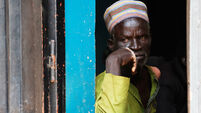Bird flu fears after death of ducks in Romania
Three domestic ducks have died of bird flu in eastern Romania, but authorities said they had not confirmed whether the birds were infected by the H5N1 strain that experts are tracking in the fear that it could mutate and spawn a human flu pandemic.
There are several strains of bird flu but only a few are deadly. Authorities strongly suspect that tests now underway in Britain will confirm the birds were infected with H5N1, Agriculture Ministry spokesman Adrian Tibu says.
If so, it would be the first time the virus is detected in Europe.
Authorities worldwide are on alert for confirmed cases of fowl infected with the H5N1 strain now circulating in parts of Asia.
H5N1 has infected 116 and killed 60 people in Asia, but experts are more worried that the bird virus could mutate into a form that passes easily between people. That could trigger a human flu pandemic.
The best defence against a pandemic is to stamp out any outbreak in birds before the virus has a chance to change.
The dead birds were first noted in the village of Ceamurlia near the Black Sea in late September, officials said. Samples were sent to a lab in Bucharest, where scientists found antibodies to bird flu.
However, that lab did not have the capability to determine the exact strain of the virus, and sent the samples to Britain. Results are expected in the next few days.
The World Health Organisation said the findings – whether they came back positive for H5N1 or not – showed surveillance in Romania was high, which a spokeswoman called ”reassuring”.
Tibu said officials in Ceamurlia have killed nearly all the domestic fowl in the village and have banned hunting across the entire Danube River delta. Residents have been urged not to let their animals roam free.
Agriculture minister Gheorghe Flutur said officials also restricted the movement of people in and out of Ceamurlia and banned the transport of animals.
Medical teams are to administer flu vaccines for residents.
Experts believe regular, seasonal flu vaccines may provide some protection from H5N1.
WHO said the plan to vaccinate villagers was an unusual approach that had not been used in other areas experiencing suspected H5N1 outbreaks.
“But it shows they understand the magnitude of the risks of the two viruses mixing,” said Maria Cheng, WHO’s influenza spokeswoman.













